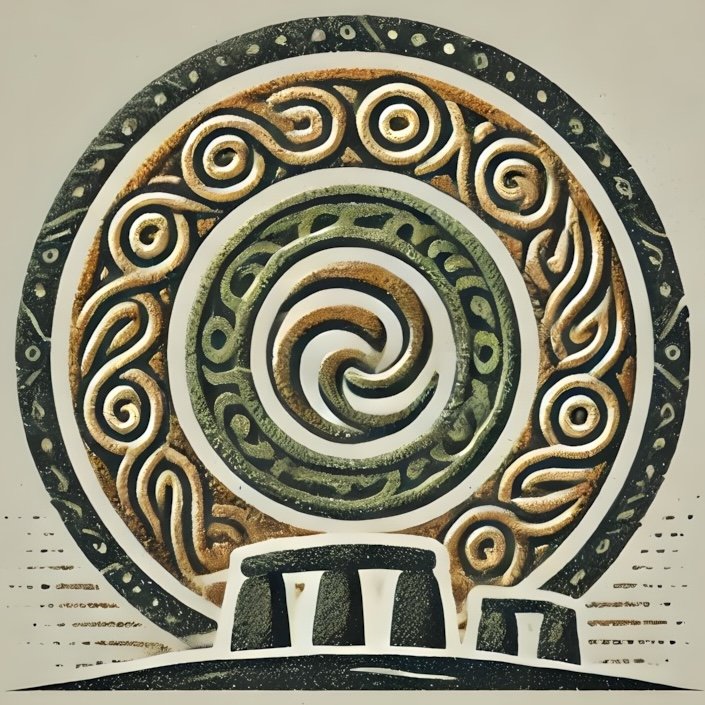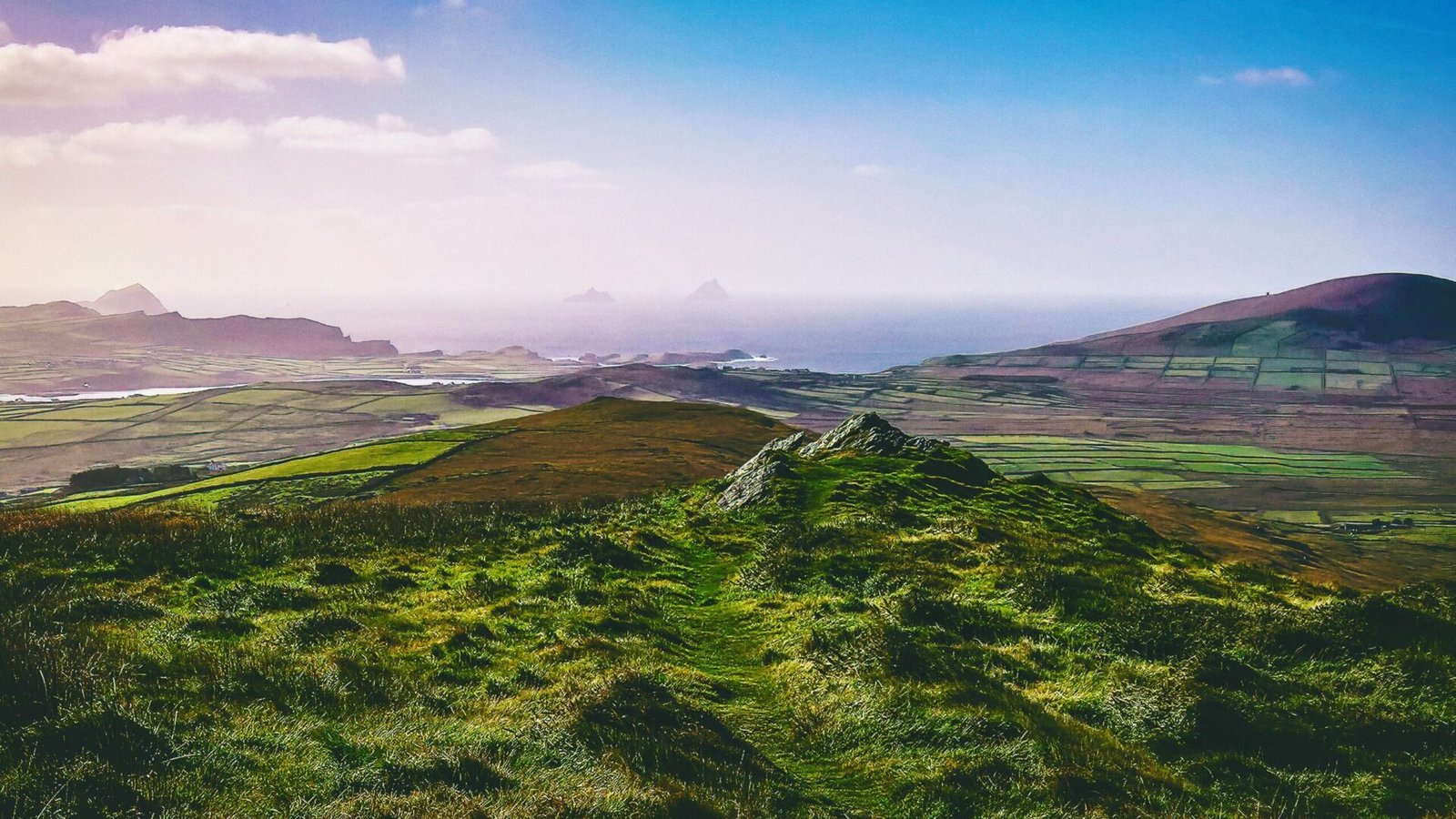Ireland’s prehistory is a captivating tapestry woven from the threads of ancient human experience, cultural evolution, and mythological narratives. Spanning thousands of years before written records, this era is marked by significant developments in society, technology, and belief systems. Understanding Irish prehistory not only illuminates the lives of our ancestors but also enriches our appreciation of the landscapes we traverse today. This pillar page serves as a comprehensive guide to the key elements of Irish prehistory, connecting archaeological findings with the rich mythology that permeates the Irish landscape.
Definition and Scope of Prehistory
Prehistory refers to the period of human history before the advent of written records, encompassing the time from the earliest human presence in Ireland around 12,000 BCE to the arrival of the Celts and the establishment of written language around 500 BCE. This vast timeline is divided into several phases: the Paleolithic, Mesolithic, Neolithic, Bronze Age, and Iron Age. Each phase is characterized by distinct technological advancements, social structures, and cultural practices.
In Ireland, prehistory is not merely a chronological sequence; it is a complex interplay of environmental changes, migration patterns, and cultural exchanges. The study of prehistory in Ireland involves a multidisciplinary approach, incorporating archaeology, anthropology, geology, and even genetics to create a holistic understanding of the past.
Archaeological Context
The archaeological context of Irish prehistory is rich and varied, with numerous sites that provide insight into the lives of early inhabitants. The landscape is dotted with megalithic tombs, stone circles, and hill forts, each telling a story of the people who built them. Key archaeological methods, such as stratigraphy, radiocarbon dating, and artifact analysis, have allowed researchers to piece together the lifestyles, beliefs, and technologies of prehistoric communities.
One of the most significant archaeological sites is Newgrange, a Neolithic passage tomb in County Meath. Built around 3200 BCE, Newgrange is older than Stonehenge and the Great Pyramids of Giza. Its intricate design and alignment with the winter solstice highlight the advanced understanding of astronomy possessed by its builders. Other notable sites include the megalithic tombs at Knowth and Dowth, which, along with Newgrange, form part of the Brú na Bóinne UNESCO World Heritage Site.
Cultural Development
Cultural development during the prehistoric era in Ireland can be traced through the evolution of tools, art, and social organization. The transition from a hunter-gatherer lifestyle in the Mesolithic period (c. 8000–4000 BCE) to settled agricultural communities in the Neolithic (c. 4000–2500 BCE) marked a significant shift in societal structure. The introduction of farming led to the establishment of permanent settlements, allowing for population growth and the development of complex social hierarchies.
The Bronze Age (c. 2500–500 BCE) saw further advancements, including the use of metal tools and weapons. This period is characterized by the emergence of elaborate burial practices, such as cists and urns, as well as the construction of monumental structures like the stone forts of the Aran Islands. The artistry of this era is evident in the intricate designs found on gold jewelry and ceremonial objects, reflecting a society that valued craftsmanship and aesthetics.
Mythology and Its Connection to Prehistory
Irish mythology is deeply intertwined with the country’s prehistoric past, offering a rich narrative that complements archaeological findings. The mythological cycles, particularly the Mythological Cycle and the Ulster Cycle, feature gods, heroes, and legendary figures that are often associated with specific locations and ancient sites. These stories serve as cultural touchstones, preserving the values, beliefs, and historical memories of the Irish people.
For example, the Tuatha Dé Danann, a race of supernatural beings in Irish mythology, are often linked to the construction of megalithic structures. The tales of their battles and interactions with mortals provide insight into the spiritual and social dynamics of prehistoric Ireland. Additionally, many ancient sites, such as the Hill of Tara and the Giant’s Causeway, are steeped in myth, drawing visitors who seek to connect with the stories of their ancestors.
Key Prehistoric Sites in Ireland
Ireland is home to an array of prehistoric sites that offer a glimpse into the lives of its ancient inhabitants. Some of the most significant include:
– Newgrange: A passage tomb known for its winter solstice alignment, showcasing the advanced astronomical knowledge of its builders.
– Loughcrew: A complex of passage tombs that features stunning carvings and offers breathtaking views of the surrounding landscape.
– Dún Aonghasa: A prehistoric fort on the Aran Islands, perched on a cliff overlooking the Atlantic Ocean, exemplifying the strategic importance of such structures.
– The Céide Fields: An extensive Neolithic landscape of field systems and dwellings, revealing the agricultural practices of early settlers.
These sites not only serve as archaeological treasures but also as pilgrimage destinations for those seeking to connect with Ireland’s ancient heritage.
The Legacy of Prehistory in Modern Ireland
The legacy of Ireland’s prehistoric past is evident in its cultural identity, landscape, and traditions. Many contemporary Irish customs, folklore, and even place names have roots in prehistoric times. The reverence for ancient sites is reflected in the ongoing preservation efforts and the integration of these locations into modern tourism.
Moreover, the exploration of prehistory has influenced contemporary art, literature, and music, inspiring a renewed interest in the narratives of the past. Festivals celebrating ancient traditions, such as the winter solstice at Newgrange, draw visitors from around the world, fostering a sense of connection to the land and its history.
Importance of Understanding Prehistory for Future Generations
Understanding Irish prehistory is crucial for future generations as it provides a foundation for cultural identity and heritage. By studying the lives of our ancestors, we gain insights into human resilience, adaptation, and creativity. This knowledge fosters a sense of belonging and continuity, reminding us that we are part of a long and storied lineage.
Furthermore, the lessons learned from prehistoric societies regarding sustainability, community, and spirituality can inform contemporary practices and values. As we face global challenges, the wisdom of the past can guide us in creating a more harmonious relationship with our environment and each other.
. By exploring the archaeological sites and connecting them with the vibrant tapestry of Irish mythology, we not only celebrate the past but also pave the way for a deeper appreciation of our shared human experience.

